Is Apple's AirPower wireless charging pad late because of something besides technical challenges?
Much ado has been made about a minor peripheral charger Apple previewed last year but subsequently still hasn't brought to market. But, there's a much more obvious reason for AirPower to never show up, an issue Steve Jobs himself ran into multiple times.
Is AirPower that big of a deal?
Last year, alongside iPhone X and the new cellular Series 3 Apple Watch, Apple showed off a preview of AirPower: an induction charging pad that could charge a new phone, a new watch and a yet-unreleased new charging case for AirPods. Why did Apple demonstrate a product that wasn't yet ready to ship?
It's rare for Apple to introduce anything that isn't ready to sell immediately, or at least within the next few weeks. Notable exceptions included the first Apple TV which debuted a few months before it went on sale, just as Apple was showing off another entirely new product in the original iPhone. And that iPhone didn't ship for nearly six more months, at the end of June 2007.
Since then, Apple has generally introduced new iPhones only when they were ready to sell. Secrecy and excitement for new technological features is a big factor in Apple's sales cycle. If Apple were to announce or outline new technologies well in advance, its competitors would have that much extra time to introduce their own copies. Siri, FaceTime, Touch ID and Animoji are all examples of wow-tech that helped to sell new iPhones because they were exclusive to new devices that are now available for sale.
Despite the minor fanfare, AirPower wasn't exactly a wildly compelling new product with the ability to boost new Apple Watch 3 or iPhone 8 and iPhone X sales, however. In fact, its preview may have only resulted in at least some people holding off on buying AirPods, waiting for the new version with an induction-charging case.
So, in the great-genius of retrospect, it's pretty uncontroversial to say that Apple shouldn't have wasted any of its 2017 keynote talking up a product that it still isn't ready to release.
Why did it, given that Apple Watch 3 already introduced the key feature of cellular data, and iPhone 8 and X offered many new features beyond their new support for Qi induction charging?
It appears Apple was trying to make induction Qi charging more attractive, given that it had worked to build the new feature into both of its new iPhones. In fact, support for Qi required a reworking of the iPhone case, involving a glass back and new edge-shell architecture that resulted in a heavier and more fragile device.
Induction charging is somewhat nice to have, but it wasn't really ready for prime time last year. Apple's year-ago phones could only initially support very slow 5 watt induction charging upped to a slightly less slow 7.5 watt via a subsequent software update.
That's much slower than using a standard iPad charger, and far worse than taking advantage of their new support for USB-PD, which lets you use a newer MacBook or similar USB-C adapter along with a special Lightning cable to charge at the fastest possible rate.
The new fast charging USB-PD feature of last year's new iPhones is particularly noteworthy for how fast it powers a nearly dead phone to half in 30 minutes, or to a nearly full 85 percent in about 120 minutes. Using induction charging or the slow 5W USB block Apple still ships with its new phones, it takes about 120 minutes just to get to 50 percent. Once you get past 85 percent, the charging speed tapers off across the board.
Apple's 2017 wireless charging was not really very fast at all, but is potentially convenient if you have a charging pad in your kitchen, at your work desk, built into the table at your favorite coffeeshop, installed in your car, or at bedside allowing you to incrementally charge your phone here and there without dealing with a cable.
The problem was that existing pads could only charge one device. With AirPower, Apple was highlighting that its future hardware would solve this issue, eventually making it more convenient to charge the multiple wireless devices Apple's customers now carry and wear. It just hasn't arrived yet.
Given that it's now a year later, and that Apple has scrubbed mention of the product from its website, it appears that the product might have been abandoned. And, Apple isn't saying anything to AppleInsider or any other venue that we've seen about it, even after multiple requests.
At the very least, Apple doesn't want to talk about it anymore. And for good reason: induction charging wasn't as much of a game changer as it seemed to be back a year or two when Samsung was touting it as an exclusive feature and Ikea was selling pads designed to install in its furniture.
Is AirPower just delayed?
There's another reason why Apple may not want to be talking about AirPower: new AirPods still haven't been released, so directing more attention to a product that either is still unfinished or waiting on would simply ding current AirPods sales further with no upside.
Apple has keen insight into what consumers really think about Qi charging because it sells third party charging pads in its stores. If it were wildly popular, Apple could have switched gears and released a simpler wireless charging pad by now.
The reality is that nobody appears to be really clamoring for a pad to charge their late model iPhone and Series 3 Watch, because the phone can be charged a lot faster using a cable, and the newest watches don't really need to be taken off and charged up throughout the day — and the earlier models that did weren't going to support AirPower).
Given that Apple has improved the induction charging speed of its new 2018 iPhone XS and XR models, it's still possible that Apple is simply waiting to introduce AirPower alongside its new AirPods, to ensure that everyone is excited about the new thing when it's actually ready to buy. It might also appear further into the future, once induction charging gets to the point where it could replace Lightening altogether, resulting in purely wireless, port-free mobile devices.
This all happened before
Recall another time Apple announced a new feature designed to sell iPhones that took much longer to release than anticipated: the White iPhone 4. After being announced in June 2010, it resulted in months of embarrassment as Apple struggled to perfect a durable, flawless white glass back for the new model.
During that time, all the advanced talk about the White option did nothing but potentially stall some sales as buyers impatiently waited for it to go on sale for nearly a year — all the way to April 2011.
It could be that Apple pulled all mention of AirPower simply to quiet the chatter around a product that isn't yet ready. However, there's also the distinct possibility that AirPower has been canceled, for a reason that nobody seems to have considered. In part, this is because Apple doesn't like talking about this ugly dark secret. That reason: intellectual property challenges.
Despite protests from pundits who wondered aloud why Apple pre-announced a new feature if there were some risk of it not actually shipping, and the presumption that this hasn't ever occurred before, this has happened before.
This all happened before, twice more
Beyond the White iPhone 4, both times that Apple announced something it didn't ever end up shipping involved features dramatically framed as important new technology-based announcements in an Event Keynote by no less than Jobs himself.
The first was the announcement, back at WWDC 2010, that the-then new FaceTime feature introduced as part of iOS 4 on iPhone 4 was based on industry standard protocols and that Apple's technology stack for video conferencing would be opened up to allow third parties to create interoperable, cross-platform products. That never subsequently shipped, and Apple eventually stopped talking about it. That was eight years ago. It's pretty clear today FaceTime will never be open.
The second example occurred later that year at the release of iOS 4.2 in the debut of AirPrint, a new feature for iOS and Macs that allowed Apple's mobile devices to (finally!) print, using a much simpler system that didn't require drivers and complex PC-style printer settings and configuration.
For new printers, hardware makers only needed to incorporate support for Apple's new AirPrint protocol. For existing printers, Apple planned to enable Macs to share them to iOS devices in a way that would allow any iPhone or iPad to print via the shared printer using AirPrint, even if the printer had been built and sold prior to AirPrint being invented. Yet this feature was later pulled from Mac OS betas and never shipped to consumers.
There is very strong circumstantial evidence that indicates both cancellations were caused by intellectual property challenges. In other words, somebody sued to demand royalty payments or to stop the deployment of new technology to preserve their existing sales.
In the case of AirPrint, we know it was working because we tested it working in beta releases. The problem wasn't that Apple couldn't get it to work, it was that it couldn't sell or even give it away as a feature for a non-technical reason.
And that reason: it overwhelmingly appears to be because a printer maker (which I believe was HP) blocked AirPrint support for legacy printers to push buyers to buy new printers specifically to use AirPrint to print from mobile devices. HP actually partnered with Apple to launch AirPrint on its new models because it saw the technology as helping new sales. But legacy support for sharing existing printers — including printers not made by HP — to new iOS devices was nothing but a threat to the already stagnant demand for old fashioned paper copies of digital information.
Apple was forced to pull its already finished AirPrint sharing from Mac OS, but was not proud of this and offered no explanations. There was no public lawsuit exposing the details of any argument. Apple also wanted to remain on good terms with all of its printer partners, who it wanted to support AirPrint. Initially, only HP did.
One more example: ZFS
While never announced by Jobs, nor even publicly touted as an upcoming feature for Macs, starting in 2007 rumors floated of Apple working to shift Macs from HFS+ to an advanced new file system developed by Sun: ZFS. A Sun marketing executive even blurted out prematurely the prediction that Macs would be moving to ZFS as their default file system.
Over the next two years, Apple actually shipped some support for reading and writing ZFS volumes on Macs. However, by 2009 those features were all pulled. The reason: Oracle acquired Sun, and already had its own advanced file system project.
Further, Sun's ZFS had come under attack in a patent lawsuit by NetApp, which charged that ZFS infringed upon its storage patents related to WAFL.
Apple is a better innovator than litigator
Around the same time, Apple also turned around and decided that if it was going to continue to deal with other companies (and patent trolls) attacking every new technology it turned out, it was also going to go on the offensive against Google's Android licensees who were increasingly copying Apple's own patented work. After being sued by Nokia in 2009, it launched a lawsuit against Motorola in 2010, then sued Samsung and later settled a patent deal with HTC in 2012.
As a result, Apple was branded for years as a brutal patent enforcer trying to use litigation rather than the court of public opinion and open markets to compete on the merits of its technology. This was, of course, incredibly deceitful because Motorola, Samsung, Nokia and many other companies were also publicly suing Apple over various IP, even as companies like Qualcomm were using their market power to enforce egregious, non-competitive contracts related to monetizing their IP, directly subverting open markets and competitive innovation.
So it appears that HP killed a key AirPrint feature after Jobs introduced it, making it impossible to ever release. (Note that third parties shipped software tools that reenabled support for sharing legacy printers as AirPrint-capable, but those firms were small enough to get away with it because HP (or whoever else was behind it) saw less risk and less potential reward from publicly hunting them down and threatening legal actions.
The idea that Apple was forced to kill AirPrint sharing over IP challenges is bolstered by the case of FaceTime, over which Apple was actually publicly sued by patent troll VirnetX, resulting in jury-awarded damages and the requirement of Apple changing its architecture to avoid patent infringement.
The original design of FaceTime was intended to enable direct video conferencing between clients. However, this was subsequently changed to require an authenticating step with a client-side encryption certificate from Apple (which only Apple can provide and which it can revoke), making it impossible for other third party clients (or older jailbroken versions of iOS) to connect with FaceTime users.
As with the case of AirPrint, the real story of FaceTime wasn't ever told because nobody had an interest in telling it. Apple didn't want to pull back the curtains of its development process or detail how FaceTime worked because there was no value it it. It also had no interest in seeking pity for being defeated in an East Texas trial that awarded VirnetX more money for supposedly inventing VPN connections than Apple itself was able to claim from its multiple lawsuits against Samsung.
Ironically, in the years where punditry and most members of the tech media were assailing Apple for "litigating, not innovating in the market," Apple was only really successful in innovating and winning in the court of public opinion.
In IP litigations, Apple was largely just treading water, successfully punching out some of the sharks while being forced to pay out hundreds of millions to various phony "inventors" who claimed to have thought up some of the ideas that Apple actually brought to market— in a mobile marketplace where everyone else was massively incompetent in rolling out innovations anyone wanted to buy.
Microsoft, Nokia, Samsung, Motorola, Google, Palm, Dell, Sony, HP, Amazon and Facebook all flubbed their various incumbent and/or challenging efforts to beat Apple's iPhone or iPad.
Yet there was only one company that was beleaguered by the media for being "unable to innovate," even as the companies that introduced patent litigation against Apple were portrayed as offended giants who really deserved huge payouts because Apple was so litigious and not competing on the basis of its technology. The flawgic runs deep.
Will AirPower ever arrive?
So is AirPower the latest example of an Apple technology being grounded due to IP litigation?
Given the patent minefield surrounding "wireless" induction charging (Samsung has already been embroiled in a patent suit with a former partner, related to its implementation of wireless charging), there could be various reasons for this to occur.
Apple's new contributions to solving some of the problems of existing induction charging pads by supporting multiple concurrent devices, and determining charging priority assignment could very likely be repressed due to claims by others to have invented the idea of using multiple coils or other improvements to the basic concept of induction power transfer, making it impossible or simply too costly to release it and then defend it in court.
Samsung once attempted to block sales of iPhones in the U.S. based on the idea that Apple had acquired $11.72 chips from a company that paid to license Samsungs technologies, but Samsung wanted more money for patent royalties ($16!) from Apple just because it needed some sort of case to throw back after it trampled Apple's patent portfolio to counterfeit the iPhone.
Imagine if the courts had sided with Samsung even momentarily, and held up sales of iPhones until the case was resolved. The competitive landscape would have been radically altered, defeating all the work Apple had done in favor of a specious legal claim over patents that were never infringed in the first place.
That's essentially what happened to the promise of "open" FaceTime, where it wasn't Apple's core technology that was challenged, but rather a supporting automatic VPN setup that was used to stall its open rollout and prevent Apple from widely sharing it.
At the 2010 introduction of FaceTime, the mobile industry was also radically shifting, resulting in all of the potential licensees of FaceTime-compatible technology effectively going away (Palm, BlackBerry, Windows Mobile, Symbian, Java ME) while Google's Android appeared with a distinct disdain for Apple and little interest in releasing video conferencing that was compatible with or defined by Apple — which Google at the time thought it would quickly crush into irrelevance.
Several years later, Google would now love to have compatibly with iMessage and FaceTime. It's struggling to work with Microsoft to bring PC-connectivity to Android and with Samsung to introduce chat that works across providers and platforms the way Apple's does. Google's own efforts to launch a FaceTime-competitor have been splintered and ineffective on iOS.
Conversely, at this point Apple has zero interest in bringing the value of FaceTime to Google's platforms, thanks in part to its efforts being interrupted by patent trolls until it became clear that sharing would no longer be advantageous.
It certainly may be that the problem holding up AirPower isn't actually any technical engineering problem, but simply intellectual property issues. While Apple excels at the former, the latter is less an issue of pure competence and more a matter of lucky deal making or legal wrangling that depends on the rationality of negotiators or even jury members with no real specialized understanding of the issues.
In other words, a crapshoot, where the odds are stacked against engineers.
It may be that Apple can resolve whatever issues are holding up AirPower and may eventually release the product within the year alongside new AirPods and possibly even Qi-charging iPads. But if it doesn't, the most likely reason is simply a legal conundrum— one that has occurred before and is likely to keep happening as long as patents are used to block innovation and reward speculative investment rather than protect and promote invention.
 Daniel Eran Dilger
Daniel Eran Dilger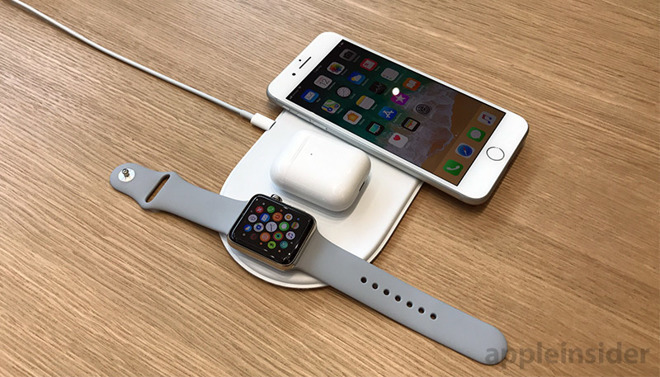
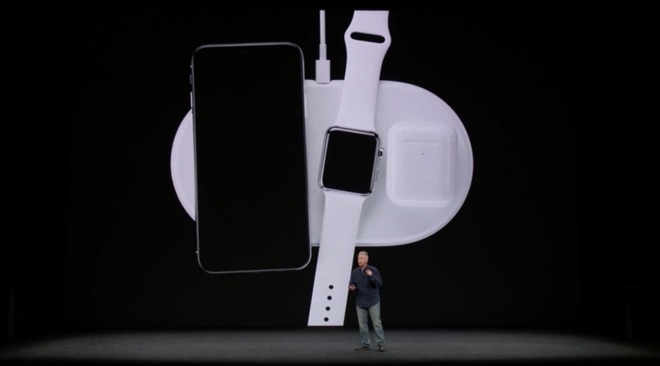
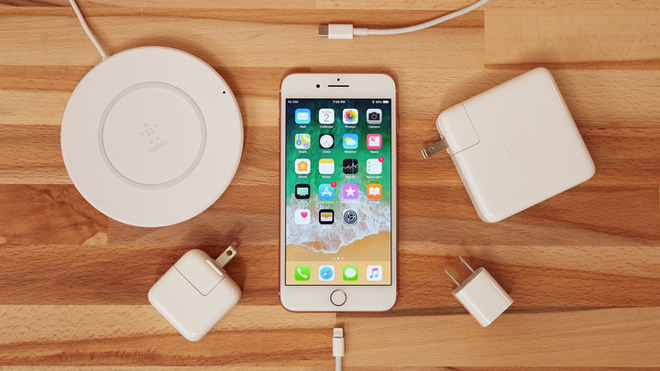
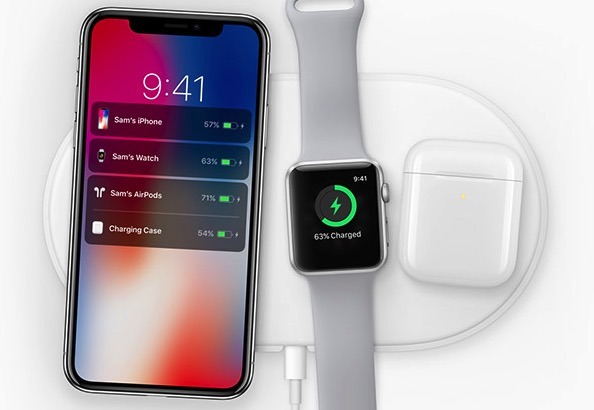
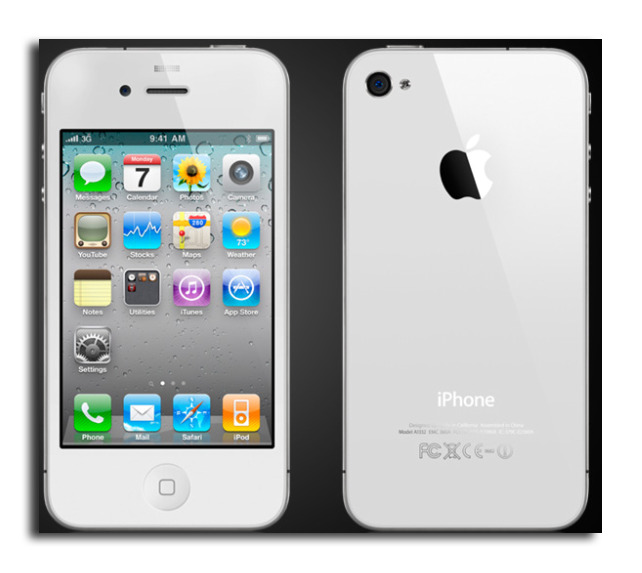
















 Wesley Hilliard
Wesley Hilliard
 Amber Neely
Amber Neely

 William Gallagher
William Gallagher

 Malcolm Owen
Malcolm Owen









